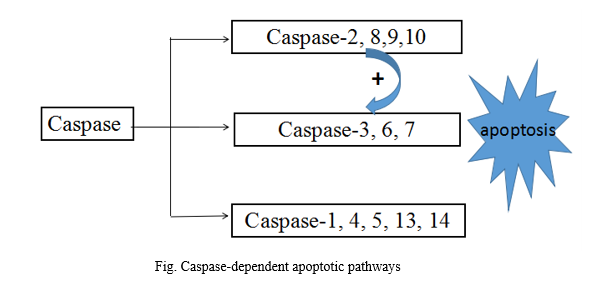The introduction of Caspase Family and Cellular Apoptosis
The topic of quantitative determination of Caspase-1 expression in ATP and LPS stimulated monocytes by ELISA analysis had been introduced. Now we briefly introduce the Caspase family members. The study on Caspase family in cellular apoptosis is very popular in recent years. 14 Caspase members have been cloned, and they are similar with amino acid sequences and structure of proteins. Caspase protein usually exists in forms of inactive zymogen.
Caspase members are divided into 3 classes as for their different function and sequence in cascade reaction. The first members of the Caspase family include Caspase- 2, Caspase- 8, Caspase- 9 and Caspase- 10. They are initiators of apoptosis, and activate the expression of other Caspase members and be self-activated. The second members are effectors of apoptosis, including Caspase- 3, Caspase- 6 and Caspase- 7, and react on downstream cascade reaction. Caspase members are involved in cellular apoptosis process and related with the morphological characteristics of cells when they are activated. The third members include Caspase- 1, Caspase- 4, Caspase-5, Caspase-13 and Caspase-14, and they mainly involve in cytokine-mediated inflammatory response. Meanwhile, they play a role in the death receptor-mediated cell apoptosis.

Caspase-8 is the first activated member in cellular apoptosis process. FADD and DED as domains are combined when it is procaspase-8. While, the two domains could be separated when cells are stimulated by FAS and its receptor. The process releases the ICE homologous region of Caspase-8, resulting in activation of Caspase-8 by self- catalyzed, then Caspase-8 activates Caspase-3, Caspase-7, Caspase-4, Caspase-9 and Caspase-10. Caspase-3 zymogen (32KD) is generally present in the cytoplasm. In the early stages of apoptosis, the activation of caspase-3 is composed of two large subunits (17KD) and two small subunits (12KD), cleaved into corresponding cytoplasm nucleus substrate, ultimately leading to cell apoptosis.
Cloud-Clone Corp. has developed some products of Caspase family based on hot researches, including recombinant proteins, specific antibodies and quantitative ELISA kits. There are many kits of 14 Caspase members , and below are some ELISA kits and relevant references in table.
For more information, please visit http://www.cloud-clone.com/.
